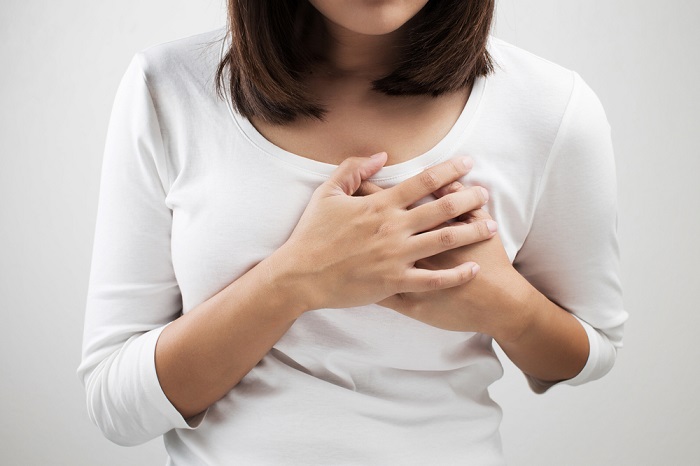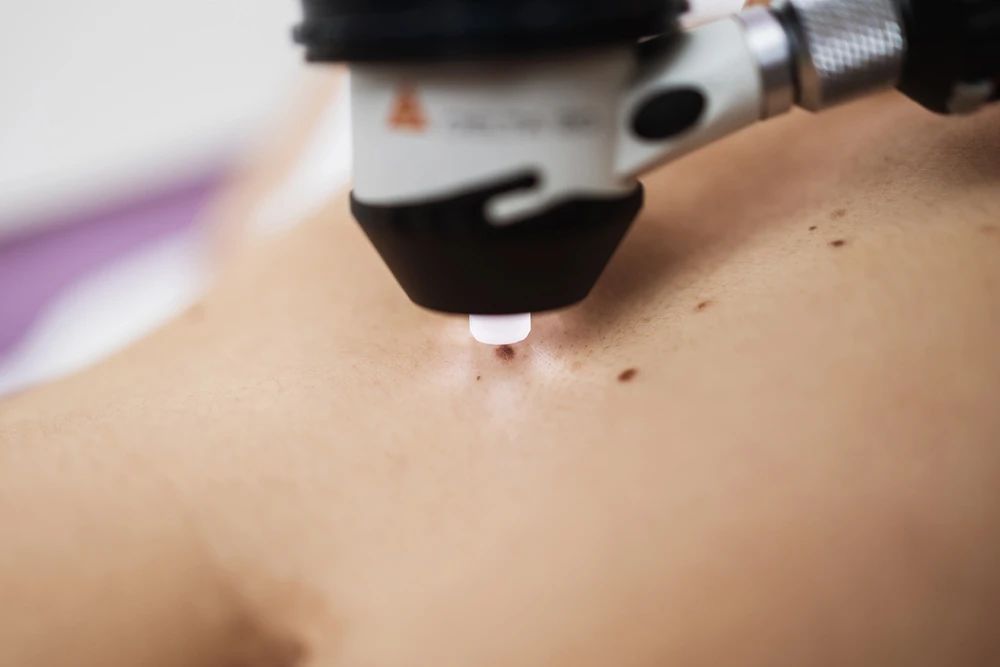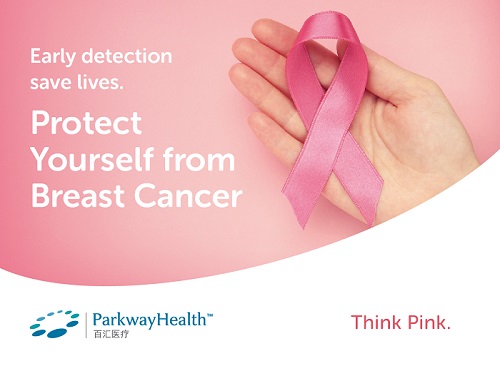Breast Lumps: Should I Worry?
2021-09-26

Breast lumps are masses that develop in the breast. Although breast lumps are often not cancerous, it is important to know the warning signs of cancer and when to see a doctor.
Breast lumps: Should I worry?
Breast lumps are masses that develop in the breast. There are some women that can feel small lumps in both breasts. If these small lumps are felt throughout both breasts, this is most likely normal breast tissue. Some women experience lumpiness and pain in the breast as they go through their menstrual cycle. These lumps form due to extra fluid in the breast, but they eventually subside.
However, you may feel lumps that are large or hard compared to the rest of the breast. Although most lumps are non-cancerous (also called benign masses), they can be a source of worry and anxiety for most women. While breast lumps occur more commonly among women, some men may also experience this condition.
When should I be concerned with breast lumps?
Most women worry that their breast lumps are a sign of cancer. Among women aged 40 and younger, 80 – 85% of these breast lumps are not cancerous.
It is important to recognize that breast lumps that could potentially be cancerous so that early treatment could be instituted. Some warning signs of breast cancer include:
- Change in the size or shape of the breast
- Dimpling, redness or scaling of the overlying skin in the breast
- Lumps in the armpit
- Lumps that continue to grow larger
- Lumps that persist even after menstruation
- Nipple discharge
- Pulling in, or inversion of the nipple
- Swelling of a portion of the breast
How can breast lumps be diagnosed?
When you consult a doctor for a breast lump, the doctor will first obtain your medical history and perform a thorough physical examination. The doctor may also request for any of the following tests:
- Mammogram – A mammogram uses X-rays to examine the breasts for signs of cancer
- Breast ultrasound – Breast ultrasound uses sound waves to evaluate breast lumps
- Breast magnetic resonance imaging (MRI) – MRI uses magnetic fields and can produce very detailed images of the breast
- Biopsy – A biopsy involves removing a portion of the lump or the entire lump to determine if it is cancerous
Are there different types of cancerous breast lumps?
Cancerous breast lumps can be classified in many ways. The most common classification is based on the specific cell that is affected in the breast.
Ductal carcinomas are the most common type of breast cancer. These tumors originate from the milk duct.
The second most common type are the lobular carcinomas. These tumors originate from the milk-producing glands (called the lobules) of the breast.
Angiosarcoma is a rare type of breast cancer. This tumor originates from cells that line the blood vessels or lymph vessels of the breast.
Paget’s disease of the nipple is also rare. It originates from the breast ducts, but spreads to the skin of the nipple or the skin surrounding the nipple.
Phyllodes tumors are rare breast tumors that originate from the connective tissue of the breast. Although majority of Phyllodes tumors are benign, 10% are cancerous.
Breast cancers can also be classified based on whether they have spread. In situ breast cancer refers to tumors that have not yet spread into the surrounding breast tissue. Invasive breast cancers are tumors that have already invaded or infiltrated the surrounding breast tissue.
What are the treatment options for cancerous breast lumps?
The treatment options for cancerous breast lumps depends on the type of breast cancer and the extent of spread of the cancer. The available treatment options include:
- Lumpectomy – A lumpectomy involves the removal of only a portion of the breast.
- Mastectomy – A mastectomy involves the removal of the entire breast.
- Quadrantectomy – Also called partial mastectomy, involves the removal of one quarter of the breast and some surrounding muscles.
- Drug therapy – There are various drugs currently in use for breast cancer. These drugs include chemotherapy, hormone therapy, and targeted drug therapy.
- Radiation – Radiation therapy involves using high levels of radiation to kill cancer cells.
Can breast lumps recur?
Breast lumps can recur months or years after treatment. If you had breast surgery, you may feel lumps that are caused by scar tissue. However, a recurring lump can also be due to recurrence of breast cancer. Cancerous breast lumps may recur in the original site or in a different area of the breast.
When should I see a doctor?
It is best to consult a doctor if you experience any of the following:
- Breast lump with any warning sign of breast cancer
- Breast lump that recurs after treatment
A general surgeon can evaluate your breast lump and give your advice if further tests are needed. For more information or to schedule an appointment, please contact 400-819-6622.
Article reviewed by Dr. Fang Zhang, General Surgeon at ParkwayHealth

Copyright: Health Plus an online health and wellness web resource developed by Parkway Singapore
References:
- Breast lump: Early evaluation is essential, retrieved on 10 September 2020 from https://www.mayoclinic.org/healthy-lifestyle/womens-health/in-depth/breast-lump/art-20044839. (8 July 2020)
- Breast lumps, retrieved on 10 September 2020 from https://www.radiologyinfo.org/ens/info.cfm?pg=breastlumps. (31 January 2020)
- Breast Cancer, retrieved on 10 September 2020 from https://www.cdc.gov/cancer/breast/basic_info/symptoms.htm. (11 September 2018)
- Komen SG. If you find a lump, retrieved on 10 September 2020 from https://ww5.komen.org/BreastCancer/WhatToDoIfYouFindaLump.html. (8 August 2020)
- Hook DLB. When to Worry About Breast Lumps, retrieved on 10 September 2020 from https://www.everydayhealth.com/womens-health/when-to-worry-about-breast-lumps.aspx. (7 September 2017)
- Pietrangelo A. Breast Lump, retrieved on 10 September 2020 from https://www.healthline.com/symptom/breast-lump. (14 August 2019)
- Brazier Y. What are breast lumps?, retrieved on 10 September 2020 from https://www.medicalnewstoday.com/articles/186084. (12 July 2018)
- Types of Breast Cancer, retrieved on 10 September 2020 from https://www.cancer.org/cancer/breast-cancer/understanding-a-breast-cancer-diagnosis/types-of-breast-cancer.html. (20 September 2019)
- Breast cancer, retrieved on 10 September 2020 from https://www.hopkinsmedicine.org/breast_center/breast_cancers_other_conditions/phyllodes_tumors.html. (n.d.)
- Recurrent breast cancer, retrieved on 10 September 2020 from https://www.mayoclinic.org/diseases-conditions/recurrent-breast-cancer/symptoms-causes/syc-20377135. (16 April 2020)
- Recurrent Breast Cancer, retrieved on 10 September 2020 from https://www.breastcancer.org/symptoms/diagnosis/recurrent. (29 January 2020)
- Drugs Approved for Breast Cancer, retrieved on 10 September 2020 from https://www.cancer.gov/about-cancer/treatment/drugs/breast (16 July 2020)






























